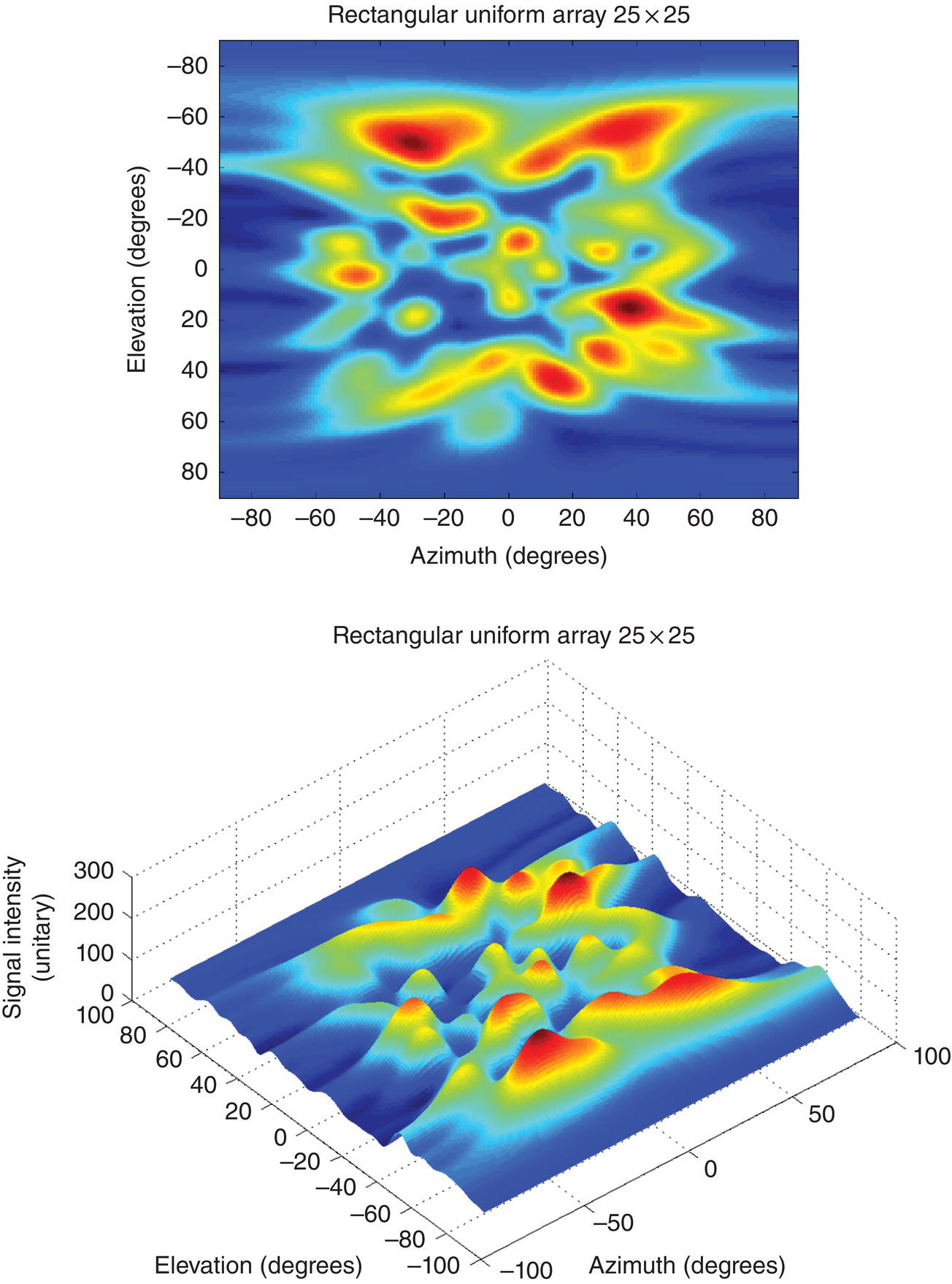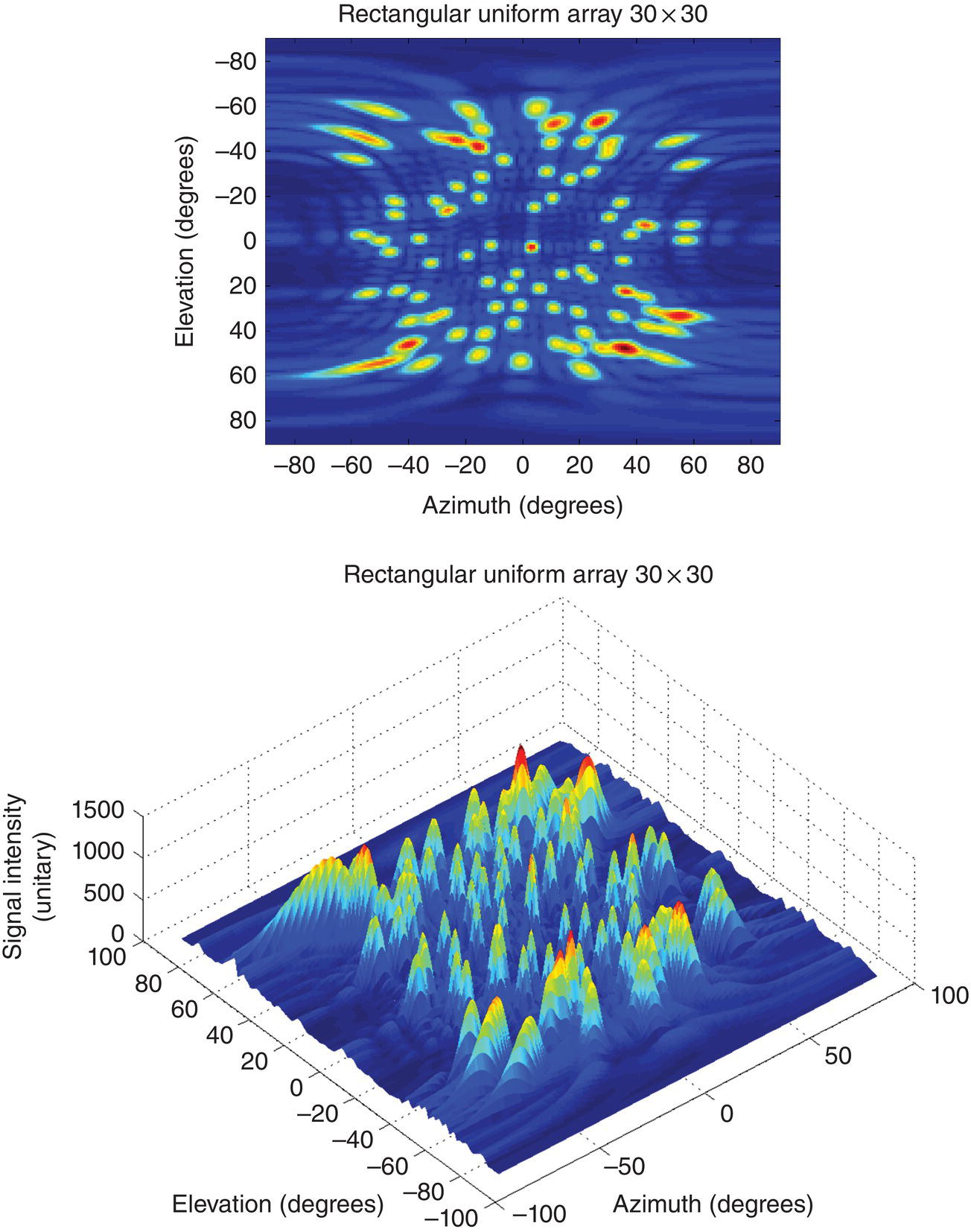15Massive MIMO
MIMO systems with large number of antennas, referred to as massive MIMO, are able to provide high antenna directivity and thus a high level of interference suppression. Examples of antenna patterns are shown in Figures 15.1.1 and 15.1.2.

Figure 15.1.1 Antenna patterns for 25 × 25 array

Figure 15.1.2 Antenna patterns for 30 × 30 array
While this is expected to significantly increase the network capacity, it also brings about an important problem in weighted sum rate maximization (WSRM) in a multicellular environment, since the technique is intrinsically sensitive to channel estimation errors.
15.1 Linearly Precoded Multicellular Downlink System
In this section, we study ways to maximize the weighted sum rate in a linearly precoded multicellular downlink system where the receivers are equipped with a single antenna. With perfect channel information available at the base stations (BSs), we first present a specific fast converging algorithm that solves the WSRM problem [35–38]. Then, the assumption is relaxed to the case where the error vectors in the channel estimates are assumed to lie in an uncertainty set formed by the intersection of finite ellipsoids. We present two procedures to solve the intractable nonconvex robust designs based on the worst case principle. ...
Get Advanced Wireless Networks, 3rd Edition now with the O’Reilly learning platform.
O’Reilly members experience books, live events, courses curated by job role, and more from O’Reilly and nearly 200 top publishers.

